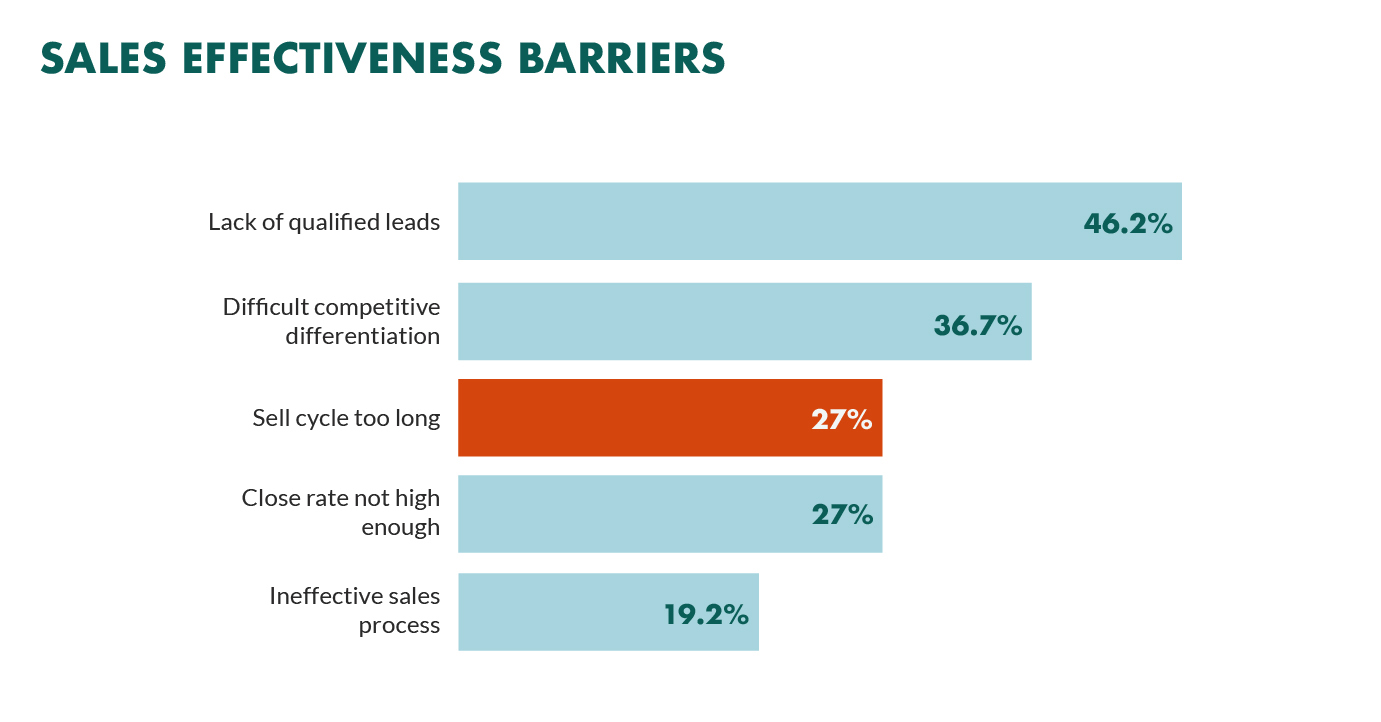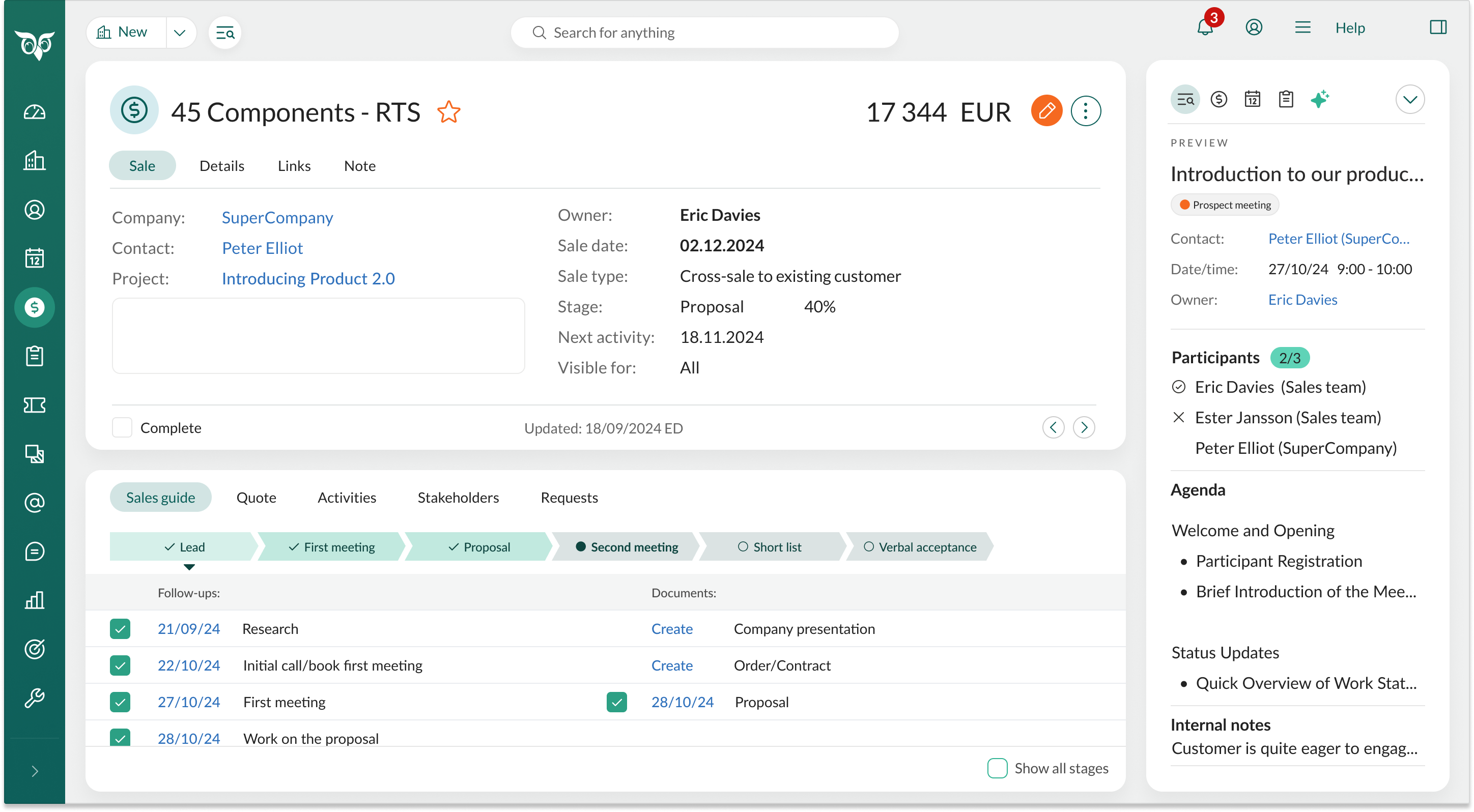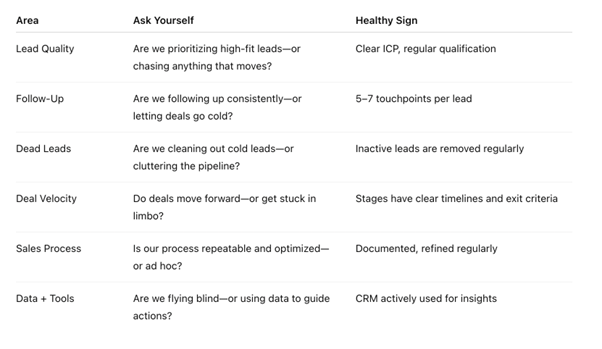Your sales pipeline is more than just a list of leads or a dashboard of deals.
It’s the single most important predictor of future revenue - and one of the most powerful tools your team can use to grow with confidence.
Yet most companies are still struggling.
In fact, 63% of sales managers say their organization does a poor job managing its pipeline. That’s a massive missed opportunity.
Because when done right, pipeline management doesn’t just help you stay organized - it helps you:
- Forecast revenue with confidence
- Prioritize the right deals at the right time
- Shorten your sales cycles
- Spot risks before they become problems
- Drive more predictable, scalable growth
The data backs it up:
Companies that define a clear sales process grow revenue 18% faster.
And those that optimize pipeline management practices grow 28% faster than their peers.
In this article, we share 12 proven strategies to strengthen your sales pipeline - from smarter prioritization to CRM automation. Whether you're managing a team or running solo, these tips will help you close more deals, faster.
But first - let’s quickly align on what we mean by “pipeline.”
What is a Sales Pipeline?
A sales pipeline is a visual, trackable system that shows where each deal stands in your sales process - and what it will take to move it forward.
Think of it as your revenue roadmap. It helps you monitor deal flow, forecast performance, and prioritize your time around what matters most: turning opportunities into outcomes.

Whether you're qualifying leads, booking demos, or closing contracts, your pipeline shows:
- How many deals are in motion
- Which stage each deal is in
- How close you are to hitting target
- What steps need action right now
For modern sales teams, pipeline visibility isn’t optional - it’s how you scale, forecast, and win.
Now let’s dive into the tactics that actually move the needle.
1. Prioritize High-Intent, High-Value Opportunities
Not all leads are created equal - and your time is too valuable to spend chasing every name in your CRM. The most effective sellers know how to focus on the deals that matter most.
Start by defining what a sales-ready lead looks like in your business.
Use data from your CRM to analyze:
- Win rates by company size, industry, or channel
- Lifetime value and churn risk by deal type
- Deal velocity by buyer persona
Then rank your opportunities by both fit and intent. With a CRM, you can create custom filters and lead scoring rules that surface your highest-potential opportunities - so your pipeline stays focused on deals that are likely to close.
Want to qualify and prioritize leads automatically? See how SuperOffice CRM helps you focus on what matters most.
2. Build a Follow-Up Cadence You Can Actually Stick To
Prospects rarely buy on the first contact. In fact, today it takes more than 8 touches to close a deal - yet most salespeople (44%) give up after just one.
That’s not a discipline issue. It’s a process issue.
The best sales teams create repeatable, trackable follow-up cadences that don’t rely on memory or spreadsheets. Instead of scrambling to remember who to follow up with, when, and how - your CRM should do that work for you.
With SuperOffice CRM, you can:
- Automate follow-up sequences based on prospect behavior
- Set smart reminders that surface at the right time
- Track every touchpoint in one place - calls, emails, meetings, and more.
A consistent cadence builds trust, keeps momentum high, and ensures no opportunity slips through the cracks. With the right system in place, following up becomes a strength - not a struggle.
3. Disqualify Dead Deals Sooner
Letting go of a lead can feel counterintuitive - especially if you’ve invested weeks (or months) nurturing the relationship. But stalled deals clog up your pipeline, cloud your forecast, and waste valuable selling time.
That’s why top-performing sales teams don’t just focus on qualifying leads - they focus on disqualifying the wrong ones quickly and confidently.
Look for signals like:
- No clear timeline, budget, or authority
- Repeated rescheduling or lack of engagement
- A mismatch between their needs and your solution
Removing dead weight from your pipeline is just as important as moving the right deals forward. It keeps your focus sharp, your forecast accurate, and your momentum strong.
4. Track the Metrics That Actually Move the Needle
Your sales pipeline isn’t static - it’s dynamic. To optimize it, you need to measure what matters most and monitor changes over time. But too many teams are drowning in data without a clear focus.
Instead, zoom in on a handful of high-impact KPIs:
- Deal volume at each stage
- Average deal size and sales velocity
- Stage-by-stage conversion rates
- Close ratio and forecast accuracy
With SuperOffice CRM, you can build customizable dashboards that surface real-time pipeline health - broken down by rep, team, region, or product line. That makes it easier to spot trends, diagnose bottlenecks, and make confident decisions.
See how SuperOffice CRM gives you instant visibility into pipeline performance - no spreadsheets required.

5. Audit (and Optimize) Your Sales Process
Sales techniques evolve fast. What worked last year may no longer resonate with today’s buyers. That’s why the most successful teams regularly review and refine their pipeline stages and sales tactics.
Start by identifying friction points:
- Are prospects stalling at a particular stage?
- Are reps losing time on admin or chasing the wrong leads?
- Are follow-ups consistent - or falling through the cracks?
Treat your sales process like a living experiment. Tweak email cadences, adjust talk tracks, or A/B test different demo formats. Small, data-informed changes compound into big performance gains over time.
6. Keep Your Pipeline Clean and Current
A bloated, outdated pipeline is more than a nuisance - it’s a liability. Out-of-date contacts, unlabeled opportunities, and ghosted leads distort your forecast and distract your team.
Top reps make pipeline hygiene part of their weekly routine:
- Remove or re-engage stale deals
- Update close dates and deal values
- Add notes from the latest conversations
- Reassign leads if ownership has shifted
With SuperOffice CRM, this upkeep becomes second nature. You can set reminders, create workflows for data clean-up, and get alerts when deals stagnate too long in a single stage.
7. Shorten the Sales Cycle (Without Rushing the Buyer)
B2B sales can drag on for months - sometimes more than a year. And the longer it takes, the more room there is for the buyer to lose momentum, go silent, or choose a competitor.
Nearly 1 in 3 (27%) of sales reps say a long sales cycle is the biggest barrier to hitting quota.

One of the biggest pipeline wins? Reducing time-to-close without sacrificing value.
Here’s how to do it:
- Remove friction by offering clear pricing or fast-track proposals
- Share key info (like case studies or ROI calculators) earlier in the process
- Set next steps during each call - not after
- Use automation to shorten delays between touchpoints
8. Standardize What Works
If every rep runs their own playbook, it’s nearly impossible to scale.
Top-performing sales teams create repeatable, proven sales processes - then empower reps to personalize within that framework. That means:
- A shared understanding of the buyer journey
- Clear qualification criteria and exit points for each stage
- Templates for outreach, discovery questions, and follow-ups
- A shared CRM to track deal progress in real time
With SuperOffice CRM, you can build these workflows into your pipeline: create structured sales stages, automate task triggers, and give managers visibility without micro-managing.
Build a repeatable, scalable pipeline with SuperOffice CRM. See how it works.

9. Equip Buyers with the Right Content at Every Stage
Buyers want to make confident, informed decisions - and your content can be the difference between momentum and a stalled deal. Yet too often, sales content is generic, outdated, or hard to find.
Your job? Make it easy for prospects to find what they need - before they even ask.
What’s surprising is that only 27% of sales reps collaborate with marketing on content - despite 95% saying relevant content influences deals.
At each pipeline stage, share content that helps them move forward:
- Early stage: Send blog posts, industry reports, or problem-framing guides
- Mid stage: Share product sheets, use cases, or ROI calculators
- Late stage: Offer implementation guides, case studies, and customer testimonials
And don’t do it alone. Sales and marketing alignment is key: the best teams co-create content based on real prospect questions and objections.
10. Use a CRM to Drive Consistency and Visibility
If you're managing a full pipeline without a CRM, you're playing with fire.
Modern CRM platforms don’t just store contact details - they centralize your entire sales process. From deal tracking and activity logging to forecasting and collaboration, a CRM ensures nothing slips through the cracks.
With SuperOffice CRM, you can:
- See where every deal stands - and what’s at risk
- Automate next steps based on deal stage or inactivity
- Access full communication history to personalize outreach
- Segment prospects and prioritize based on real-time data
This isn’t just about tools - it’s about confidence. When your pipeline is clean, visible, and data-backed, you can focus less on guesswork and more on growth.
Ready to bring clarity to your pipeline? Book a personalized SuperOffice CRM demo today.
11. Automate Wherever You Can (Without Losing the Human Touch)
Manual tasks might feel productive - but they’re often the biggest blockers in your pipeline. Automation helps your team stay focused on selling, not scrambling.
In fact, sales teams that use automation increase productivity by 14% and reduce overhead by 12%.
Smart CRM automation can:
- Trigger follow-up emails based on deal stage
- Alert you when a deal has stalled or gone cold
- Automatically assign leads to the right rep or region
- Schedule reminders so nothing falls through the cracks
But the goal isn’t to sound robotic. The best automation still feels personal - because it’s built on the right data and delivered at the right time.
12. Use Data to Find - and Fix - What’s Slowing You Down
Your pipeline is a goldmine of insight - if you know where to look.
CRM data can highlight patterns and friction points you might otherwise miss. Start by tracking key sales performance metrics, such as:
- Conversion rates between stages
- Average deal size by industry or segment
- Pipeline velocity (how quickly deals move through)
- Lost deal reasons and close-win trends
When you spot a consistent drop-off or delay, dig deeper. Is it poor qualification? Slow follow-ups? Lack of content? The answers are in the data.
Want smarter insights without the manual work? SuperOffice CRM delivers real-time pipeline analytics - talk to a CRM expert today.
Quick Pipeline Health Check: Where Are Your Gaps?
You’ve just explored 12 ways to build a healthier, more effective sales pipeline. But how do you know if yours is performing at its best - or if it’s quietly leaking revenue?
Use this quick checklist to spot opportunities for improvement.

If you answered “no” or “not sure” to more than a couple of these, you’re not alone. The good news? Every challenge is fixable - especially with the right tools.
Download our new guide: 10 Questions that help you improve forecasting, optimize lead management, and empower your team to close more deals.
Don’t Just Manage Your Pipeline - Maximize It
Your sales pipeline isn’t just a way to track deals. It’s your strategy in motion. It shows you where to focus, what’s working, and where revenue is being won - or lost.
By taking a more structured, data-informed approach to pipeline management, you’ll not only close more deals - you’ll spend less time chasing the wrong ones. And over time, that means faster growth, stronger forecasting, and better customer relationships.
But even the best strategies need support.
Ready to build a healthier, higher-performing pipeline?
With SuperOffice CRM, you can:
- Track every deal from first touch to close
- Automate follow-ups and reduce manual work
- Prioritize the leads most likely to convert
- Build a repeatable, scalable sales process
Talk to a CRM expert and see how high-performing sales teams are growing faster with less friction.



